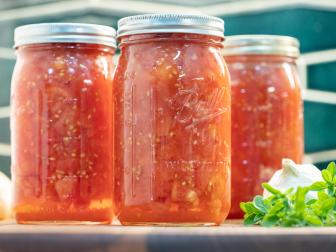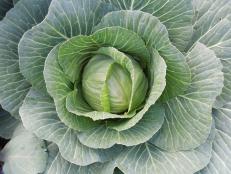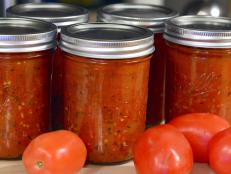How to Freeze Tomatoes From Your Garden
Extend your garden harvest by putting your tomatoes in the deep freeze.

Ball Horticultural Company
The process of freezing tomatoes requires no special equipment and is simle enough that even freezing tomatoes in small batches is worth the effort.

When tomatoes are in full force, the value of capturing the taste of summer through canning cannot be denied. Canning tomatoes is a great way to preserve the harvest for year-round use. But canning is also time consuming and requires some investment in the tools of the craft. Water bath canners. Tongs and lifters. Jars and lids. While I encourage anyone interested in food preservation to consider taking the plunge into water bath canning, it isn’t the only game in town.
How to Can Tomatoes
Canning tomatoes is a great, easy way to preserve the season's harvest so you'll have fresh tomatoes all year long. See our simple steps for the water bath canning method.
Freezing tomatoes has some distinct advantages over other methods of preserving the harvest. And for those new to crop preservation, it is an easy way to get started.
Advantages of Freezing Tomatoes
No special equipment needed. At its simplest, freezing tomatoes takes little more than airtight containment and space in the freezer. Vacuum sealers are terrific and as much or as little effort can be invested in preparing the tomatoes before packaging, but a ziploc bag and a dream will get you there.
Freezing is convenient. No need to rummage around in the basement for canning equipment or race out in search of canning lids or hope you have lemons on hand to add a little acid as is required when water bath canning. Odds are, everything you need is already in your kitchen.
No batch too small. You certainly could can half a dozen tomatoes, but given the setup requirements, sometimes it just doesn’t seem worth the effort. In just a few minutes, even just a few tomatoes can be preserved for a time when they will be most appreciated.
Now the bad news. Tomatoes just can’t keep it together after a good freeze. Texture and structure degrade significantly when a tomato is frozen. So if you are angling for sliced tomatoes to top a tossed salad when your cool weather crops are kicking in, frozen tomatoes probably won’t fit the bill.
Soups, sauces and salsas? That’s another story. Frozen tomatoes hold their flavor fairly well. “Thaw and dump” pint or quart-sized portions conveniently found in the freezer section of your very own kitchen hold a lot of appeal and will add a bit of summer to those cool weather comfort foods.
Because much of the structure will be lost to the freezer, my preference is to slice, dice or crush the tomatoes before freezing. They will be easier to use when thawed and much more compact than whole tomatoes when trying to make the most of limited freezer space.
How to Freeze Vegetables, Fruit and More 22 Photos
Learn how to freeze vegetables, fruit and even eggs and milk, and see how easy it is to extend the life of perishable foods.
How to Freeze Tomatoes
- Blanch tomatoes. Drop tomatoes into boiling water for 60-90 seconds and, using a slotted spoon, transfer immediately into a bowl of ice water to cool. Skin will slip easily from the flesh.
- Prepare tomatoes. Remove stems and core tomatoes. Tomatoes may be left whole, but preparing them in a way that maximizes storage space is recommended. Work over a shallow dish to retain juices.
- Transfer into storage bags. Using a ladle or measuring cup, fill pint or quart-sized zippered plastic bags or containers.
- Seal bags. Make sure to push as much air as possible when sealing to avoid freezer burn.
- Into the freezer. Try to store flat. The shape in which they freeze is the shape you’re stuck with until it’s time to thaw.
Frozen tomatoes will retain flavor for 12 to 18 months.

Tik.tak
How to Freeze Vegetables
Learn methods for freezing vegetables so you can have fresh taste long after the growing season ends.















































